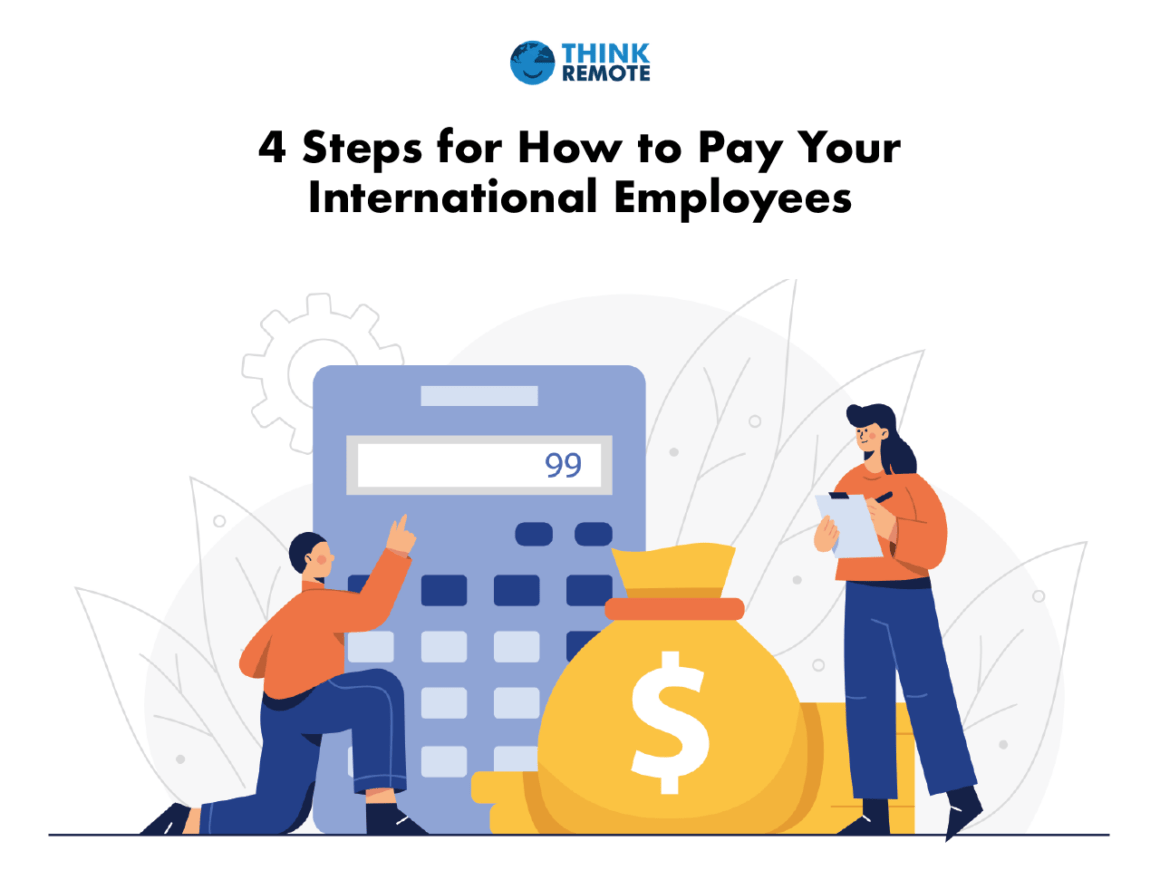Hiring the best global talent to add to your team sounds like a great idea, but it leads to many questions. Not least, how to pay international employees?
Making sure that you abide by both local, national, and international tax laws are complicated. But with an increasing number of companies doing it, there is information out there to guide your way.
If you’re wondering, ‘How do I pay international remote employees?’ we’ve got the answers below for you.
3 Simple Steps: How to Pay International Employees
The simplest scenario for hiring an overseas employee occurs when you already have a subdivision in that country. This means that your business is already set up as an employer in that country and can pay all necessary taxes through an existing payroll. Here are 3 steps to doing just that:
- Understand the legal requirements. Every country has different tax laws and employee legislation, so make sure that you are aware of all law that is relevant to your business.
- Choose the legal entity. This could be one of three choices:
- A representative office, which is the quickest and easiest type to set up but does limit the activities of staff employed there; they cannot be revenue generating.
- A branch office, which allows you to have a greater degree of flexibility but is more complicated to set up.
- A foreign subsidiary, which will allow you to take advantage of local tax breaks etc. but is the most time and admin-intensive option of the three.
- Register the company, open bank accounts, and do all the other admin related to opening an office overseas.
It’s rarely worth setting up a subdivision or overseas office for a single international employee as there is a significant time and financial cost to doing so. So, if you don’t already have an office in the area, you’ll be looking for alternative methods.
More Ways/Options to Pay International Employees Overseas
Floating Employees
Can a US company pay a foreign employee? Well, yes and no. If an employee usually lives and works in your home country and is only going to work abroad for a short while, they can be considered a ‘floating employee’ and paid through your regular payroll.
Some companies pay international staff this way to bypass local tax commitments. Do this at your peril; this is a form of tax fraud and could get you into trouble at home and overseas.
Consider them a Freelancer
Rather than putting staff on their payroll, some employers pay their overseas staff as freelancers. The staff member is liable for their own local tax and raises an invoice for work done that is settled by the home office. The sticking point with this arrangement is that many countries are trying to close tax loopholes around disguised employees or off-payroll workers. For example, IR35 in the UK puts the onus on the employer to decide if a staff member is really a contractor and penalizes them if they make the wrong choice.
Use an Employer of Record
Employers of Record (EOR) are service companies that have a presence in many countries around the world. If you want to hire someone overseas, you can go through the EOR to ensure that all taxes are properly paid. The EOR adds your staff member to their payroll. And makes sure everything is legal and above board when paying foreign employees overseas, and you settle your bill with the EOR.
Some remote recruitment agencies operate as both recruiters and EOR, supporting you to first find the right person and get them onboarded as quickly as possible if they were working in the next office. Many companies find this the best way to pay employees from ifferent countries.
Challenges for Businesses Paying International Employees
Figuring out how to pay remote employees can be challenging, there are many things to consider. Some of the considerations you will need to make when choosing payment methods for employees include:
Selecting The Right Payroll Software
Besides work-from-home software to improve your team workflow, you’ll need to look for a payroll solution capable of managing payroll in different countries and with different employment laws. You may need to have separate payroll software to manage this.
Changing Exchange Rates
Can you pay employees in foreign currency? Yes, you can. The issue is that you may end up with a fluctuating cost for that staff member as exchange rates vary. This can work in your favor if the exchange rate means that your home currency increases against the foreign one. But if the situation swings the other way, you can find yourself facing increased costs for the same staff member.
Tax Treaties
Relationships between two countries can change; recent examples include the UK leaving the European Union (Brexit) and rising tensions with Russia due to the war on Ukraine. This can impact on the tax treaties between the two countries, which can then lead to changing costs for your business.
Other Obligations
Paying an employee isn’t just about tax. You may also have to meet other obligations such as a pension or health insurance.
It’s a Growing Trend
Learning how to pay your international employees is a lesson that many businesses around the world are currently grappling with. The pandemic has proven that workers don’t have to come into the office to be part of the team, and embracing remote working naturally leads to looking to improve the skills and diversity in your team through overseas hiring. Yes, it is a learning curve for everyone, but with plenty of options to consider, there really is nothing to stop you from making your first remote hire.






